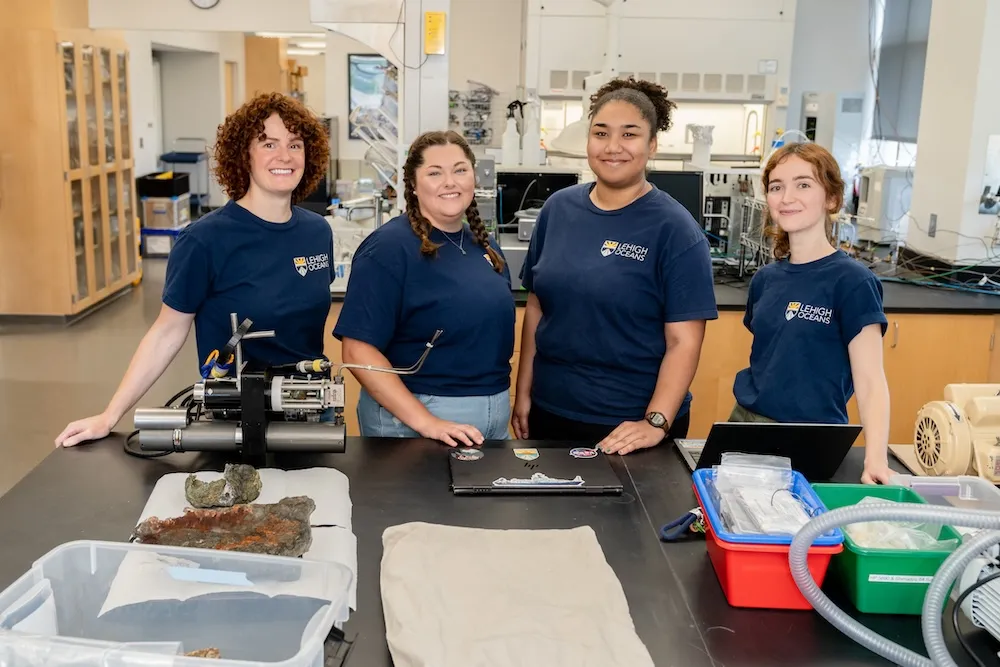
Much like the currents of the sea itself, there is not one direct path to studying the ocean. And that’s certainly the case for Earth and Environmental Sciences (EES) Ph.D. students Esmira Bibaj, Jessica Rodgers, and Jada Siverand. All three graduate students love the work they do and have nothing but enthusiasm for the department, the ocean, their research, and each other.
But it hasn’t always been smooth sailing. Bibaj, who has a background in mechanical engineering, wasn’t sure how she could study the earth or the environment, especially the ocean. “I did my masters in environmental sciences, and that completely shifted my interest,” says Bibaj. Now at Lehigh, she’s found her crew.
“Even if we all make it on the same boat or the same place, we all come from completely different backgrounds,” says Siverand who has a bachelor's degree in chemistry and experience in geologic sciences. “We are all doing different types of research, but we're all actively learning from one another.”
Rodgers, who has a background in marine science, agrees. She notes it’s helpful that they have such diverse specialities because one can’t understand something as complex as the ocean without understanding how everything works together.
As part of their research, they’ve had the opportunity to go on cruises with international teams of scientists with different areas of expertise, from geologists to biologists to scientists mapping the bottom of the sea floor. “It's not just one thing that you're thinking about. It's all of these things in concert,” explains Rodgers.
All three women were on a cruise this past spring to the East Pacific Rise, an area west of Costa Rica, where five new hydrothermal vents were discovered. “Finally getting to go on a cruise, to use a submersible, and to go into Alvin, these are things that I dreamed about,” Rodgers says.
With the samples they collected on that trip, they are now analyzing their finds in the lab. Using various instruments, such as gas and ion chromatographs, they are able to measure the concentration of different elements and chemicals in the fluids. They are particularly interested in understanding how and why different geological processes influence vent chemistry.
Bibaj, Rodgers, and Siverand are spending their summer on campus working with Jill McDermott, associate professor of Earth and Environmental Sciences and director of Lehigh Oceans Research Center. McDermott and the department have created a camaraderie that all three graduate students recognize as unique to Lehigh. The faculty have been nothing but supportive and interested in their research, and it’s created a tight-knit community.
“The EES department is very close,” Bibaj remarks. “Everyone is nice and supportive and strives for the best for their students.”
Spotlight Recipient
